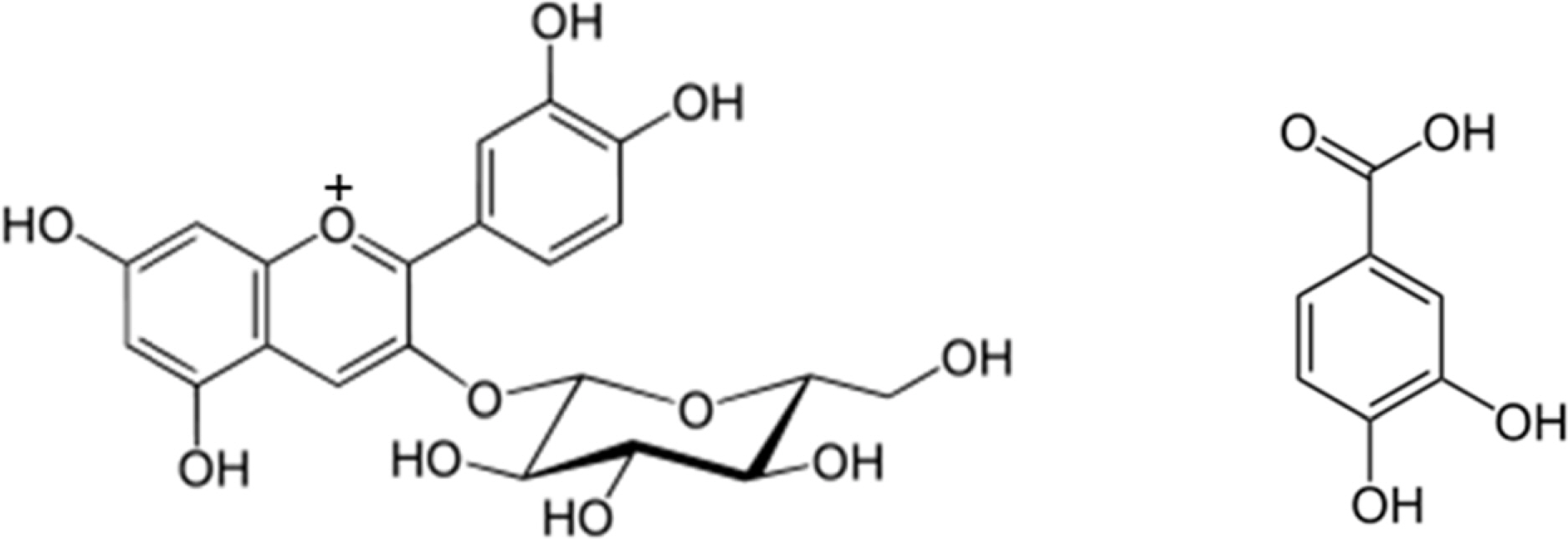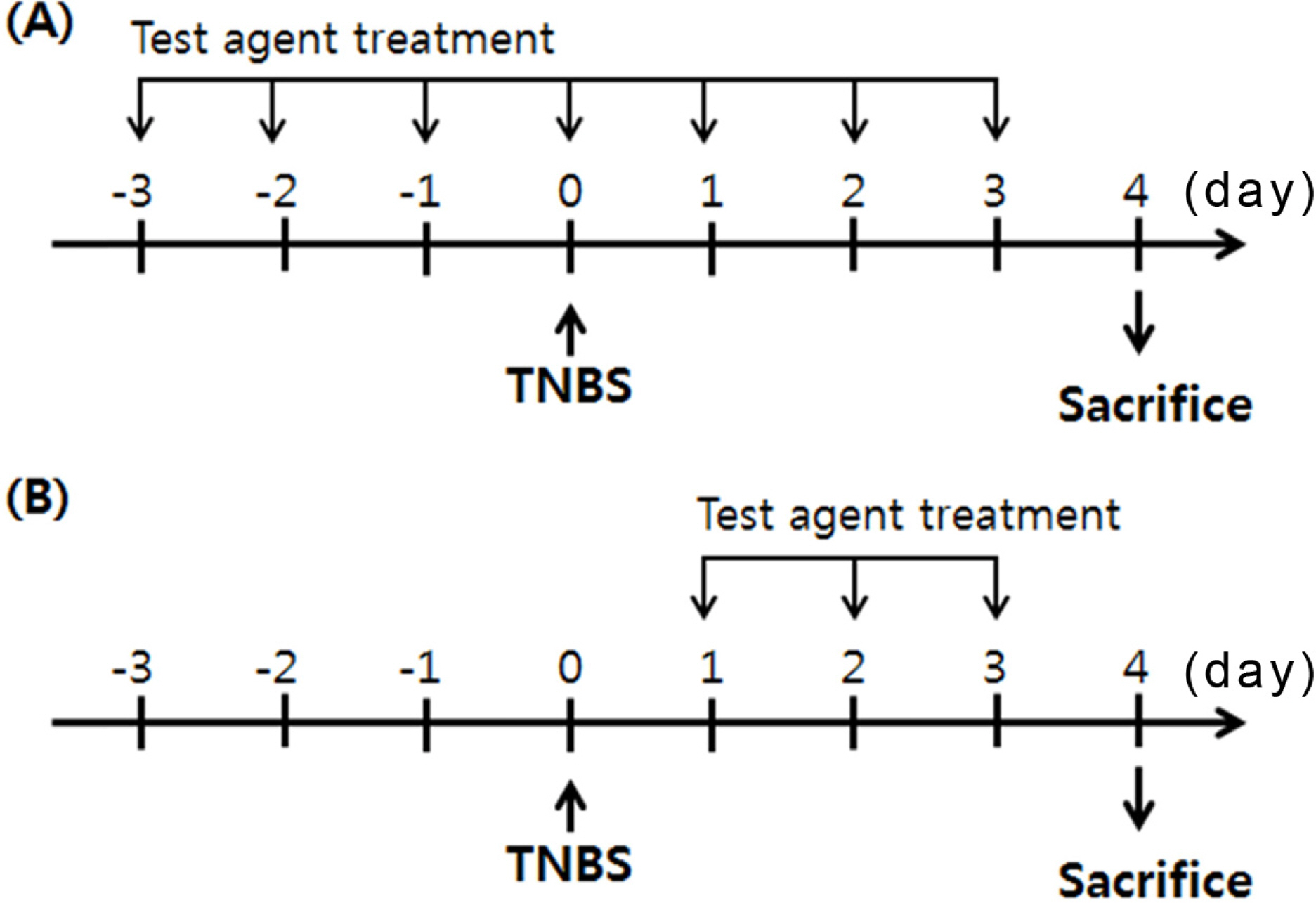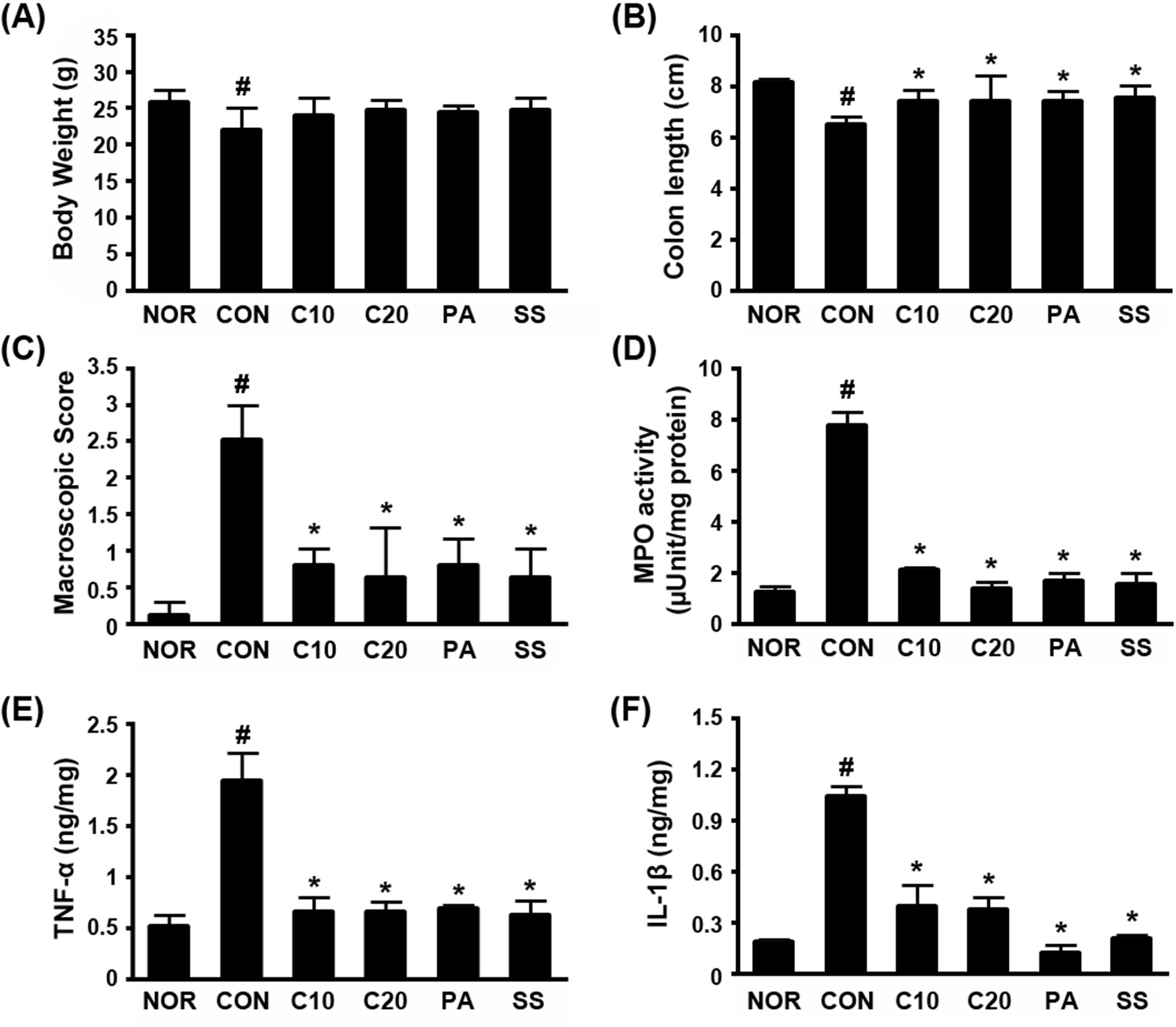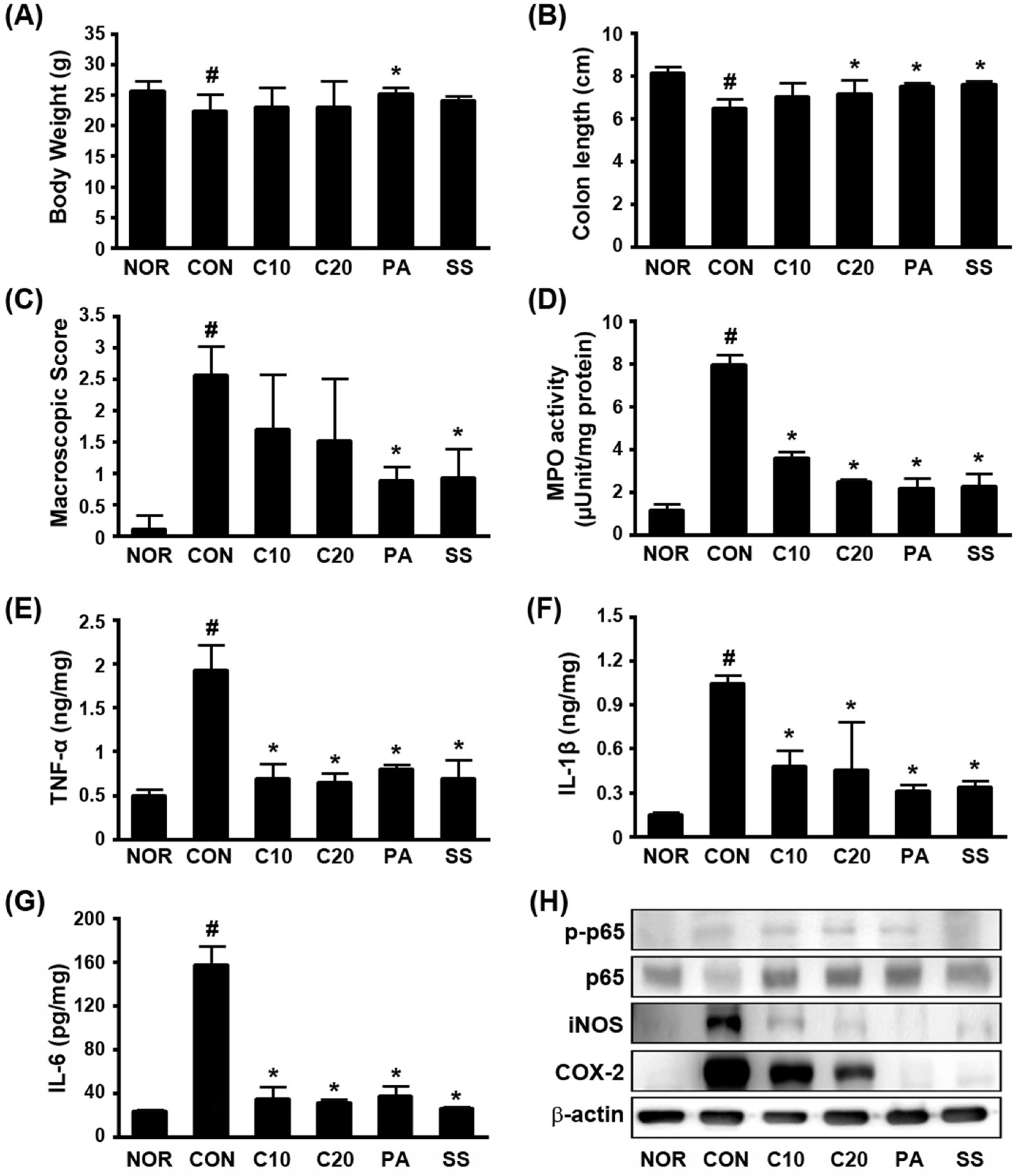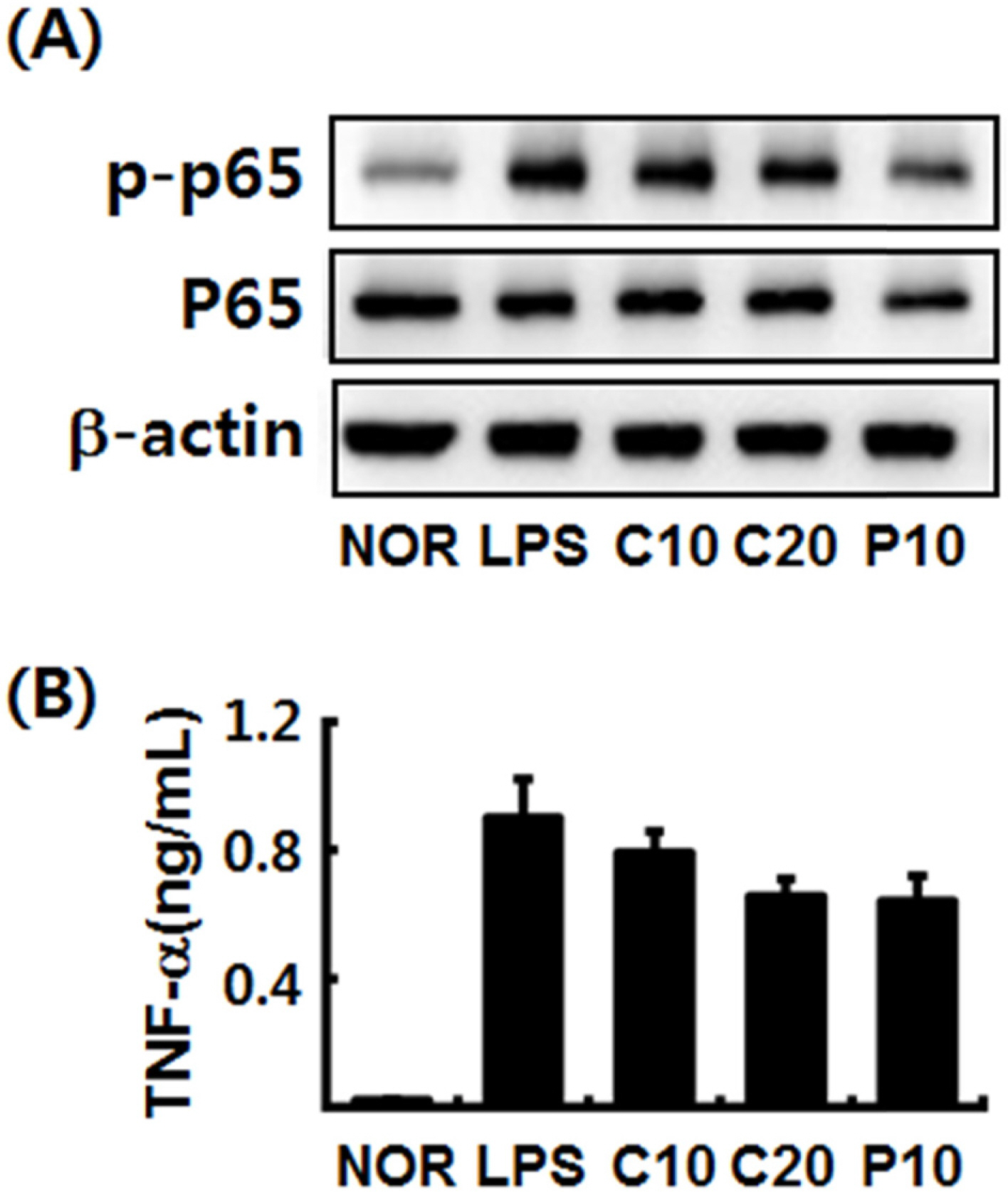Nat Prod Sci.
2016 Dec;22(4):282-286. 10.20307/nps.2016.22.4.282.
The Preventive and Curative Effect of Cyanidin-3β-D-Glycoside and Its Metabolite Protocatechuic Acid Against TNBS-induced Colitis in Mice
- Affiliations
-
- 1Department of Food and Nutrition, Kyung Hee University, 26, Kyungheedae-ro, Dongdaemun-gu, Seoul 02447, Korea. mjhan@khu.ac.kr
- 2Department of Life and Nanopharmaceutical Sciences and Department of Pharmacy, College of Pharmacy, Kyung Hee University, 26, Kyungheedae-ro, Dongdaemun-gu, Seoul 02447, Korea. dhkim@khu.ac.kr
- KMID: 2366697
- DOI: http://doi.org/10.20307/nps.2016.22.4.282
Abstract
- Cyanidin-3β-D-glycoside (C3G), which is widely distributed in herbal medicines and functional foods, exhibits anti-inflammatory, anti-oxidant, and anti-scratching behavioral effects. Orally administered C3G is metabolized to protocatechuic acid (PA) by gut microbiota. Therefore, we compared the anti-colitic effect of C3G to that of PA in mice with 2,4,6-trinitrobenzenesulfonic acid (TNBS)-induced colitis. Orally administered C3G and PA preventively and curatively ameliorated TNBS-induced colitis parameters, including macroscopic colitis score, colon shortening, and increase of myeloperoxidase activity. Treatment with C3G or PA also inhibited the expression of cyclooxygenase-2, inducible NO synthatase, IL-1β, IL-6, and TNF-α and the activation of NF-κB in the colon of mice with TNBS-induced colitis. Furthermore, these also inhibited lipopolysaccharide-induced NF-κB activation and TNF-α expression in peritoneal macrophages. The anti-colitic effect of PA was more effective than C3G. Orally administered PA more potently attenuate colitis than C3G by inhibiting NF-κB activation and the anti-colitic efficacy of C3G may be dependent on the biotransformation of C3G to PA by gut microbiota.
Keyword
MeSH Terms
Figure
Reference
-
References
(1). He J.., Giusti M. M.Annu. Rev. Food Sci. Technol. 2010. 1:163–187.
Article(2). Han S. J.., Ryu S. N.., Trinh H. T.., Joh E. H.., Jang S. Y.., Han M. J.., Kim D. H. J.Food Sci. 2009. 74:H253–H258.(3). de Ferrars R. M.., Czank C.., Zhang Q.., Botting N. P.., Kroon P. A.., Cassidy A.., Kay C. D.Br. J. Pharmacol. 2014. 171:3268–3282.(4). Joseph S. V.., Edirisinghe I.., Burton-Freeman B. M. J.Agric. Food Chem. 2014. 62:3886–3903.(5). Yang J.., Xiao Y. Y.Crit. Rev. Food Sci. Nutr. 2013. 53:1202–1225.(6). Tsuda T.., Horio F.., Osawa T.Biofactors. 2000. 13:133–139.(7). Min S.W.., Ryu S. N.., Kim D. H.Int. Immunopharmacol. 2010. 10:959–966.(8). Vitaglione P.., Donnarumma G.., Napolitano A.., Galvano F.., Gallo A.., Scalfi L.., Fogliano V. J.Nutr. 2007. 137:2043–2048.(9). Faria A.., Fernandes I.., Norberto S.., Mateus N.., Calhau C. J.Agric. Food Chem. 2014. 62:6898–6902.(10). di Gesso J. L.., Kerr J. S.., Zhang Q.., Raheem S.., Yalamanchili S. K.., O'Hagan D.., Kay C. D.., O'Connell M. A.Mol. Nutr. Food Res. 2015. 59:1143–1154.(11). Lee S. Y.., Jeong J. J.., Eun S. H.., Kim D. H.Eur. J. Pharmacol. 2015. 762:333–343.(12). Ebert E. C.., Hagspiel K. D.Dig. Dis. Sci. 2011. 56:295–302.(13). Wallace K. L.., Zheng L. B.., Kanazawa Y.., Shih D. Q.World J. Gastroenterol. 2014. 20:6–21.(14). Laveti D.., Kumar M.., Hemalatha R.., Sistla R.., Naidu V. G.., Talla V.., Verma V.., Kaur N.., Nagpal R.Inflamm. Allergy Drug Targets. 2013. 12:349–361.(15). Fairweather D.., Rose N. R.Lupus. 2005. 14:646–651.(16). Dauphinee S. M.., Karsan A.Lab. Invest. 2006. 86:9–22.(17). Perkins N. D.., Gilmore T. D.Cell Death Differ. 2006. 13:759–772.(18). Tsuda T.., Horio F.., Osawa T. J.Nutr. Sci. Vitaminol. 2002. 48:305–310.(19). Zhang Y.., Lian F.., Zhu Y.., Xia M.., Wang Q.., Ling W.., Wang X. D.Inflamm. Res. 2010. 59:723–730.(20). Masella R.., Santangelo C.., D'Archivio M.., Li Volti G.., Giovannini C.., Galvano F.Curr. Med. Chem. 2012. 19:2901–2917.
- Full Text Links
- Actions
-
Cited
- CITED
-
- Close
- Share
- Similar articles
-
- Saccharomyces boulardii Reduced Intestinal Inflammation in Mice Model of 2,4,6-trinitrobencene Sulfonic Acid Induced Colitis: Based on Microarray
- Protective effects of sigma 1 receptor agonist PRE084 on 2,4,6-trinitrobenzene sulfonic acid–induced experimental colitis in mice
- Gliotoxin Protects Against TNBS-induced Colitis Via Down-regulation of NF B Activation
- A Review on Chemical-Induced Inflammatory Bowel Disease Models in Rodents
- CoPPIX Protects against TNBS Induced Colitis Through HO-1 Induction

